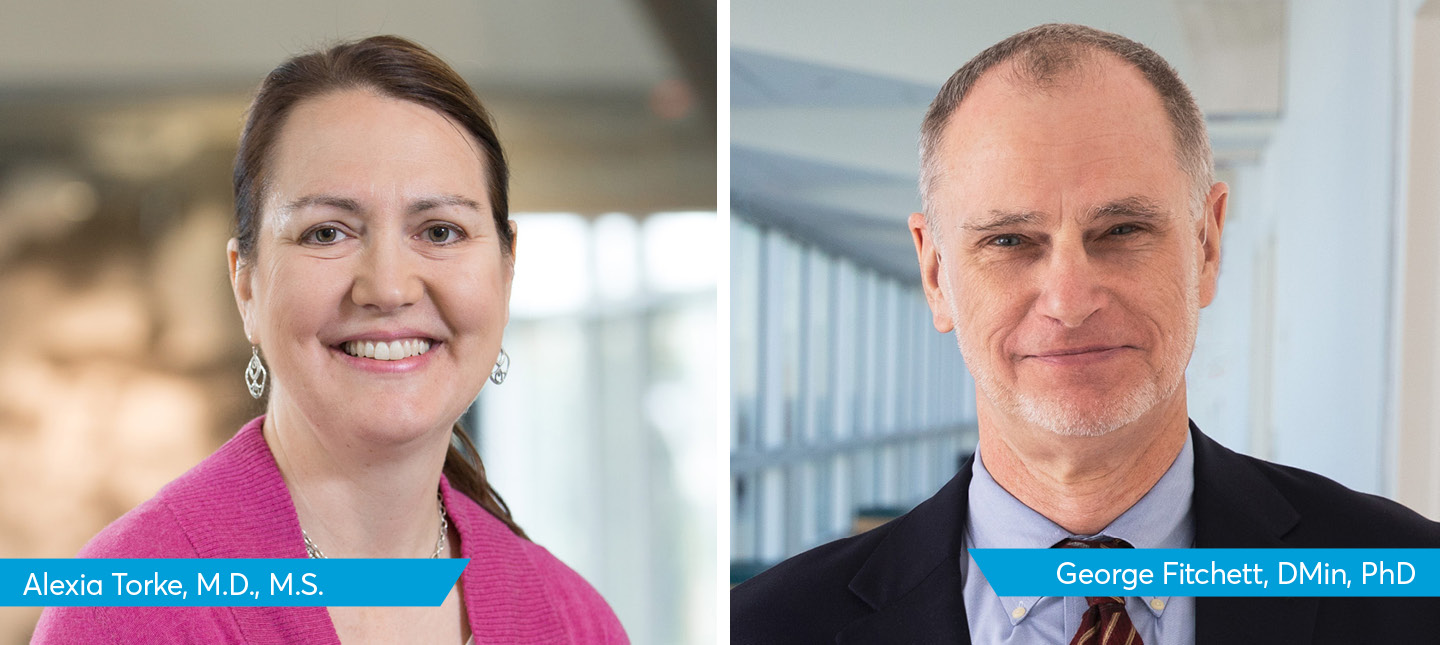Published in the journal JAMA Internal Medicine. Here is a link to the article.
Regenstrief Institute authors: Meredith Greene, M.D.
Abstract
HIV prevention remains a major public health challenge. In 2019, after years of new HIV diagnoses hovering around 38 000 individuals in the US per year, agencies across the US Department of Health and Human Services developed the Ending the HIV Epidemic in the US plan to reduce new HIV diagnoses by 90% by 2030. With setbacks from converging pandemics, in 2021 new infections hovered at 36 000. Thus, finding ways to optimize HIV prevention, including strategies such as pre-exposure prophylaxis (PrEP), is urgent.1
PrEP was first approved in 2012 as a daily pill containing emtricitabine and tenofovir disoproxil fumarate. With strong evidence for efficacy in preventing HIV transmission from sex, PrEP became a grade A US Preventive Services Task Force recommendation in 2019.2 Yet in the 12 years since approval, uptake has been painstakingly slow. In 2022, uptake was estimated at 36% of the 1.2 million individuals in the US who could benefit, with significant disparities demonstrated by lower uptake in women and in Black and Hispanic communities.3 Given the US Preventive Services Task Force grade A rating, the Affordable Care Act mandated insurance coverage of PrEP in 2020 (challenged in Braidwood v Becerra with potential implications for all preventive services) and Medicare is considering full coverage under part B. Unfortunately, challenges exist along all steps of PrEP implementation, including lack of clinician and community awareness, problems with access, and difficulties in initiating and adhering to PrEP. Debate continues about who is best positioned to prescribe and manage PrEP, centering on the role of primary care professionals (PCPs) and HIV/infectious disease (ID) specialists.
In JAMA Internal Medicine, Bakre and colleagues4 examine the association of prescribing clinician specialty (PCP vs ID vs other) with failure to pick up an insurance-approved PrEP prescription, defined as reversals (prescriptions not picked up before being returned to stock) and abandonments (initial reversals that are not picked up for 1 year). To accomplish this, they used 2015-2019 pharmacy claims data to identify new PrEP prescriptions and matched them to clinician specialty using the US National Plan Provider and Enumeration System file. Among 37 000 patients, 67% were prescribed PrEP by PCPs, 10% were prescribed by HIV/ID specialists, and 25% by other specialty clinicians, a heterogeneous group that included advance practice clinicians in unspecified specialties, emergency medicine, dermatology, and obstetrics and gynecology (OB-GYN). Significant differences existed in patient characteristics across the 3 prescribing specialties with other specialty clinicians providing more prescriptions to female patients and ID clinicians prescribing relatively more to people identifying as non-Hispanic Black.
Overall, 19.7% of PrEP prescriptions were reversed and 14% abandoned. Absolute values of PrEP abandonments were 12.06% by PCPs, 12.27% by ID specialists, and 20.29% by other specialists. Although in adjusted analyses, the odds of abandonments by patients prescribed by ID specialists were lower than PCPs, this difference was small. However, both the absolute values and adjusted odds of abandonments by patients prescribed by other specialties were higher compared to PCPs. One explanation could be differences in populations seen by each specialty. For example, patients seen by an ID specialist may be more motivated to start PrEP compared with those seen by PCPs, especially if the patient requested an HIV/ID referral specifically to seek PrEP. An alternative explanation could be that PCPs often tackle a multitude of issues in their clinics and may not have enough time or resources to provide counseling and ongoing support around PrEP. For other specialty clinicians, PrEP may not be the primary focus of the visit and their clinics may not have the structural supports to counsel and follow up patients taking PrEP.
So how do we best support prescribers, and in turn people at risk for HIV, in initiating and adhering to PrEP? First, do people at risk for HIV prefer discussing PrEP with their PCPs with whom they have existing relationships or with specialists? Only a few studies have examined this question. In a qualitative study of men at elevated risk of HIV in Rhode Island, PCPs, HIV specialists, psychiatrists, emergency medicine clinicians, and substance use treatment clinicians were all acceptable options. Some participants did prefer to have long-term relationships with their clinicians before discussing PrEP.5 However, prescribing PrEP in primary care clinics is not without challenges. A 2020 systematic review6 found that while knowledge of PrEP increased over time from 2011 to 2018, many clinicians (majority PCPs) were unfamiliar with PrEP guidelines, and relevant to the study by Bakre et al,4 expressed concern about their ability to support PrEP adherence and follow-up visits.
Interventions that support PrEP provision by PCPs, especially since they prescribed the largest proportion of PrEP prescriptions, can accelerate the uptake of PrEP.7 Many PCPs embrace their role in preventive services and desire more knowledge and decision support tools.7 Supporting a diverse clinician workforce reflective of communities most impacted by HIV will remain critical, as will acknowledging and addressing HIV stigma. Educational interventions, including focused online curriculum and support for complex cases through specialist access such as in the Project ECHO (Extension for Community Healthcare Outcomes, with PrEP–ECHO examples across the US) models show promise, especially if coupled with implementation supports that are customizable to the local clinic environment.8
The range of accepted specialties favored by individuals at risk for HIV reflects a key point from the article by Bakre and colleagues.4 Not only do PCPs play a crucial role in PrEP prescribing, but other specialties provided a quarter of the total prescriptions. Clinicians in these specialties are often excluded from discussions around PrEP provision and may need more guidance and support. Unsurprisingly, other specialties included OB-GYN and women’s health, which often provide primary care and sexual health services to women. Emergency medicine clinicians’ roles now frequently include HIV screening, which naturally leads to conversations about HIV prevention options including PrEP. While emergency departments can be a critical access point and way to increase awareness around PrEP, without support for follow-up, they lack resources to support patients in prescription initiation and adherence. Furthermore, the role of all clinicians must be considered within and outside of the traditional health care system. For example, pharmacists can play a significant role in PrEP services, given ease and ready access for patients. Policies such as those in California, which allows pharmacists to provide PrEP without a physician/advance practice clinician prescription, can be refined and expanded. Support should also be considered in the form of partnerships with trusted community voices including community-based organizations focused on HIV preventive services especially to non-HIV specialty settings. Health departments can provide PrEP services, resources to increase awareness and support clinicians, community-based organizations, as well as the public. Finally, supporting clinicians in approaches to address not just HIV prevention but also viral hepatitis, other sexually transmitted infections, and substance use disorders will help sustain broader preventive efforts.
Since the end of Bakre et al’s study period in 2019, 2 additional agents for PrEP were approved, another oral once-daily pill (emtricitabine and tenofovir alafenamide, although not approved for those at risk for HIV through receptive vaginal sex) and notably an injectable agent (cabotegravir, every 2 months). With these new options, we have even more tools to meet Ending the HIV Epidemic in the US goals by 2030, but it will require a collaborative effort to support all prescribers (not just PCPs and HIV/ID specialists) to in turn support those at risk for HIV in initiating and adhering to PrEP.
Authors
Meredith Greene, M.D.,1 and Lona Mody, M.D., MSc2,3,4
Author Affiliations
1Division of General Internal Medicine and Geriatrics, Indiana University Center for Aging Research at Regenstrief Institute, Indiana University School of Medicine, Indianapolis.
2University of Michigan, Ann Arbor.
3VA Ann Arbor Healthcare System, Ann Arbor, Michigan.
4Associate Editor, JAMA Internal Medicine.










